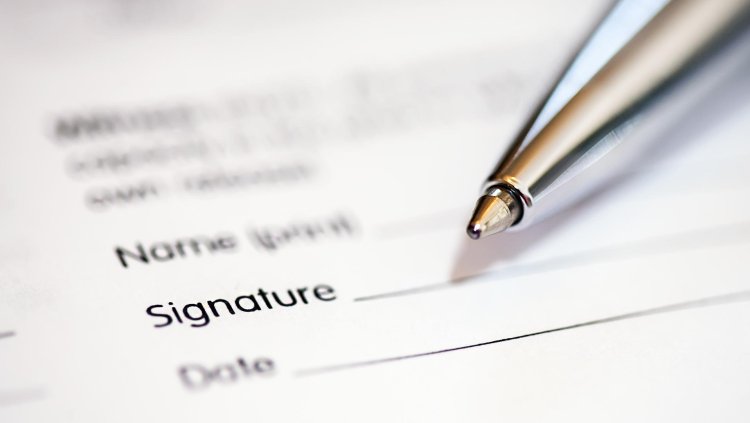Commercial Insurance Renewal Checklist A Comprehensive Guide
As businesses evolve, so do their insurance needs. Renewing commercial insurance is a crucial process that ensures your coverage aligns with current risks and operational changes.

As businesses evolve, so do their insurance needs. Renewing commercial insurance is a crucial process that ensures your coverage aligns with current risks and operational changes. This guide provides a detailed checklist to help you navigate the renewal process smoothly and effectively.
Review Current Coverage
Evaluate Existing Policies
Start by examining your existing insurance policies. Review each policy's coverage limits, deductibles, and exclusions. This evaluation will help you identify any gaps or overlaps in coverage. For instance, if your business has expanded its operations or acquired new equipment, your current policy might not cover these new assets adequately.
Check Coverage Adequacy
Ensure that your coverage limits are sufficient to protect your business. For example, if your property’s value has increased or if you’ve added more employees, you might need to adjust your coverage limits. Similarly, verify that deductibles are manageable and won’t pose a financial strain in the event of a claim.
Assess Changes in Business Operations
Identify Operational Changes
Businesses often undergo various changes, such as launching new products or services, opening new locations, or altering existing ones. Assess these changes to determine their impact on your insurance needs. For example, opening a new office or introducing a new product line might require additional coverage or adjustments to existing policies.
Consider Expansion or Reduction
If your business has expanded, you may need to increase coverage for property and liability insurance. Conversely, if you’ve downsized or ceased certain operations, review your policies to remove unnecessary coverage and reduce costs.
Update Employee Information
Review Employee Numbers and Roles
Your insurance needs may change based on the number and roles of your employees. Ensure that your workers' compensation insurance reflects the current number of employees and their job classifications. Misclassifications or outdated information can lead to inadequate coverage or higher premiums.
Adjust for New Roles or Positions
If you’ve hired new employees or promoted staff to different roles, update your policy to reflect these changes. Certain positions might be classified differently for insurance purposes, affecting premiums and coverage.
Evaluate Claims History
Analyze Past Claims
Review your business’s claims history to identify any recurring issues or patterns. Analyzing past claims can highlight areas where risk management may need improvement. For instance, frequent claims related to property damage might indicate the need for better safety protocols or more comprehensive coverage.
Identify Risk Management Improvements
Use your claims history as a basis for enhancing risk management strategies. Implementing preventative measures or addressing identified risks can help reduce future claims and potentially lower insurance premiums.
Review Property Values
Update Valuations
Ensure that the valuations of your property, equipment, and inventory are current. Property values can fluctuate due to market conditions or renovations. Accurate valuations are essential for ensuring that you have adequate coverage to replace or repair damaged assets.
Adjust Coverage Limits
Based on updated valuations, adjust your insurance coverage limits to reflect the true value of your assets. Underestimating property values can result in insufficient coverage in the event of a loss.
Check for Regulatory Compliance
Ensure Industry-Specific Compliance
Different industries have specific regulatory requirements that may affect your insurance needs. Verify that your coverage meets these requirements and remains compliant with industry standards.
Align Insurance with Compliance Needs
Ensure that your insurance policies align with regulatory compliance needs. For example, businesses in certain sectors may require specialized insurance coverage to meet legal obligations or industry standards.
Assess Liability Exposures
Review Liability Coverage
Evaluate your liability coverage, including general liability, professional liability, and cyber liability. Ensure that each type of liability coverage addresses the specific risks associated with your business operations.
Consider New Risks
If your business has introduced new products, services, or technologies, assess whether additional liability coverage is needed. Emerging risks, such as data breaches or product liability claims, may require enhanced protection.
Consider Additional Coverages
Evaluate Additional Coverages
Review optional coverages that might benefit your business. For instance, business interruption insurance can provide financial protection if your operations are disrupted due to unforeseen events. Similarly, cyber insurance can protect against data breaches and cyberattacks.
Discuss Endorsements and Enhancements
Talk to your insurance provider about potential endorsements or policy enhancements. These additions can tailor your coverage to better meet your business’s unique needs.
Compare Quotes from Multiple Insurers
Request Multiple Quotes
Obtain quotes from several insurance providers to ensure you’re getting competitive pricing. Comparing quotes helps you evaluate the cost-effectiveness of different policies and coverage options.
Compare Coverage Quality
When comparing quotes, don’t focus solely on cost. Assess the quality of coverage offered by each insurer, including policy limits, exclusions, and customer service. Quality coverage is crucial for protecting your business effectively.
Schedule a Renewal Meeting with Your Broker
Set Up a Meeting
Arrange a meeting with your insurance broker to discuss your findings and recommendations. A broker can provide valuable insights and help you navigate the renewal process.
Confirm Renewal Process
During the meeting, confirm the renewal process timeline and address any final questions or concerns. Ensure that all necessary documents and information are provided to complete the renewal smoothly.
FAQs
1. Why is it important to review my current coverage before renewing?
Reviewing your current coverage is essential to identify any gaps or overlaps in protection. It ensures that your insurance aligns with your business’s current needs and risks, helping you avoid insufficient coverage or unnecessary costs.
2. How can changes in business operations impact my insurance needs?
Changes in business operations, such as expansions or new products, can alter your risk profile. Updating your insurance to reflect these changes ensures that you have adequate coverage for new or modified risks.
3. Why should I update employee information for insurance purposes?
Updating employee information ensures that your workers' compensation insurance accurately reflects the number of employees and their job roles. This helps in proper classification and prevents issues related to claims or premiums.
4. How can analyzing past claims help with insurance renewal?
Analyzing past claims helps identify recurring issues or risk patterns. This information can be used to improve risk management strategies and potentially reduce future claims and insurance premiums.
5. Why is it necessary to review property values during renewal?
Reviewing property values ensures that your coverage limits are sufficient to replace or repair assets. Accurate valuations prevent underinsurance and ensure that you’re adequately protected in the event of a loss.
6. What are some industry-specific compliance requirements to consider?
Industry-specific compliance requirements vary but may include regulations related to safety, environmental standards, or data protection. Ensuring your insurance meets these requirements helps avoid legal issues and ensures compliance with industry standards.
7. What types of liability coverage should I review?
Review general liability, professional liability, and cyber liability coverage. Each type addresses different risks, such as property damage, professional errors, or data breaches, and should be evaluated based on your business’s specific needs.
8. What additional coverages might be beneficial for my business?
Consider additional coverages such as business interruption insurance, cyber insurance, or equipment breakdown coverage. These policies can provide extra protection for specific risks that your business might face.
9. Why is it important to compare quotes from multiple insurers?
Comparing quotes from multiple insurers ensures competitive pricing and helps you find the best value for your insurance coverage. It also allows you to evaluate the quality of coverage and services provided by different insurers.
10. What should I discuss with my broker during the renewal meeting?
Discuss your current coverage, any changes in business operations, claims history, and additional coverage needs with your broker. Confirm the renewal process and address any questions or concerns to ensure a smooth renewal.
What's Your Reaction?




















